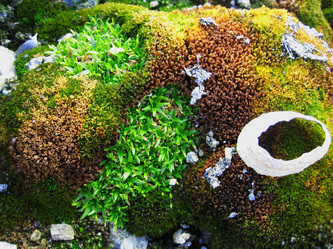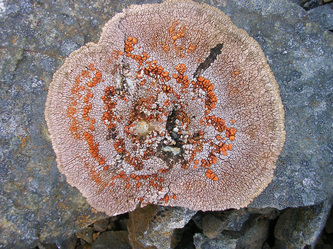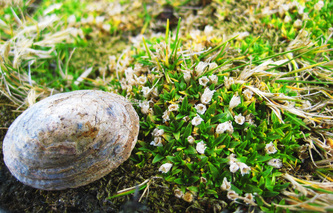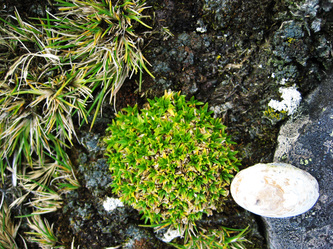The Moss
During evolution these were among the first plants to inhabit the land. Unique characteristics enable them to survive drying and freezing. Very few plants can cope with these stresses which is why the Casey vegetation is so special.
Although mosses are really tough, they can only grow in the relatively wet areas around melt lakes and streams. Small moss patches also inhabit cracks in rocks and other sheltered areas where melt water is available.
The Mosses and liverworts together form the group of plants called bryophytes. There are three species of moss in the Casey area.
The Lichen
Some lichens are often mistaken for mosses. They can survive in very dry areas and are therefore widely distributed. Lichens are even found on exposed rock surfaces close to the South Pole.
You can easily see lichens in the rocky areas around Casey. They can grow on most surfaces (e.g. rocks, soil and moss) and can survive on water in the air. Like mosses, lichens can survive long periods of desiccation. This is how they make it through the severe Antarctic winters.
During evolution these were among the first plants to inhabit the land. Unique characteristics enable them to survive drying and freezing. Very few plants can cope with these stresses which is why the Casey vegetation is so special.
Although mosses are really tough, they can only grow in the relatively wet areas around melt lakes and streams. Small moss patches also inhabit cracks in rocks and other sheltered areas where melt water is available.
The Mosses and liverworts together form the group of plants called bryophytes. There are three species of moss in the Casey area.
The Lichen
Some lichens are often mistaken for mosses. They can survive in very dry areas and are therefore widely distributed. Lichens are even found on exposed rock surfaces close to the South Pole.
You can easily see lichens in the rocky areas around Casey. They can grow on most surfaces (e.g. rocks, soil and moss) and can survive on water in the air. Like mosses, lichens can survive long periods of desiccation. This is how they make it through the severe Antarctic winters.





